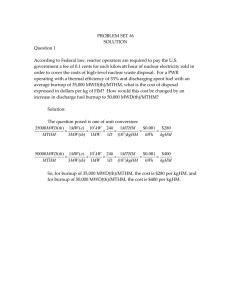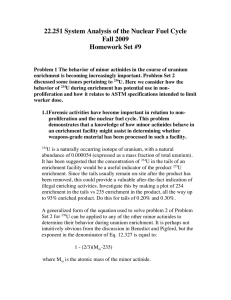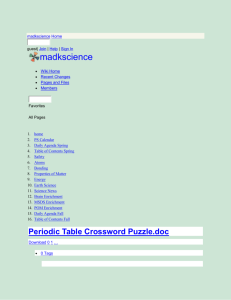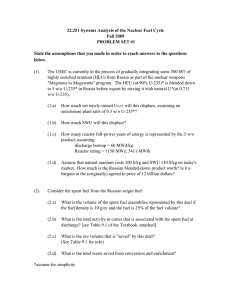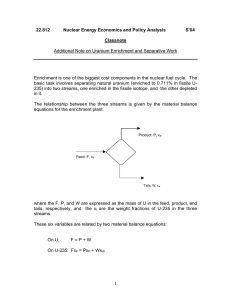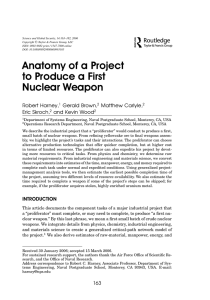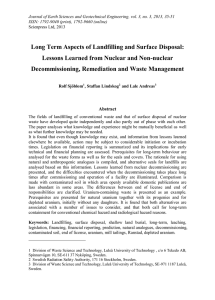MASSACHUSETTS INSTITUTE OF TECHNOLOGY Department of Nuclear Engineering PROBLEM SET #6
advertisement
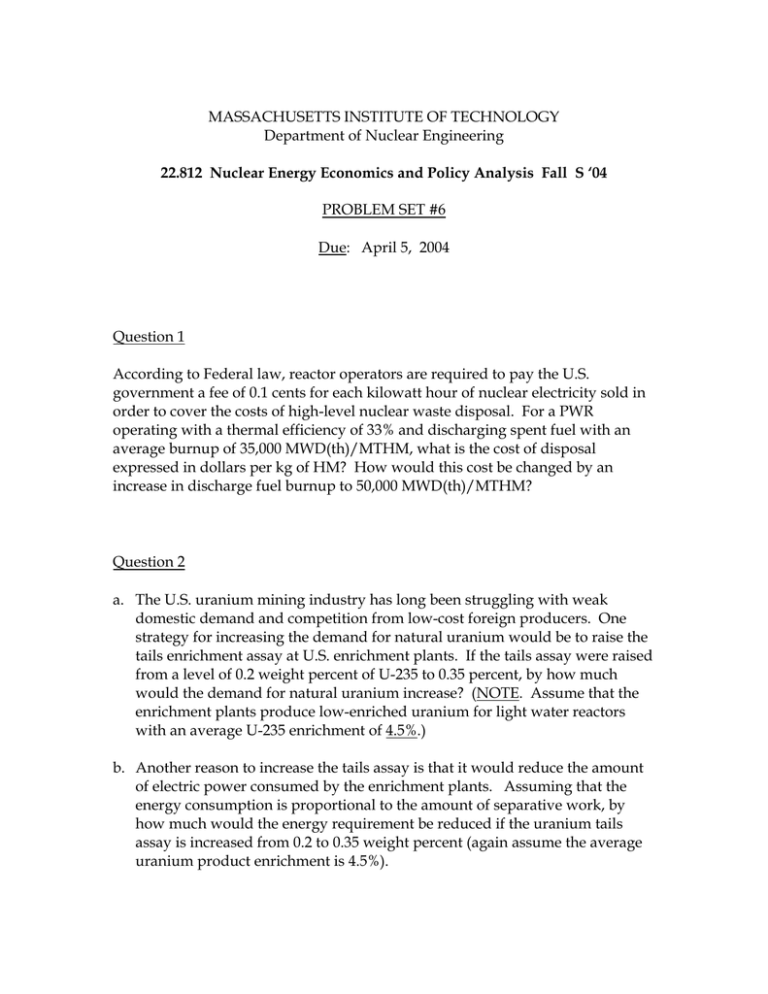
MASSACHUSETTS INSTITUTE OF TECHNOLOGY Department of Nuclear Engineering 22.812 Nuclear Energy Economics and Policy Analysis Fall S ‘04 PROBLEM SET #6 Due: April 5, 2004 Question 1 According to Federal law, reactor operators are required to pay the U.S. government a fee of 0.1 cents for each kilowatt hour of nuclear electricity sold in order to cover the costs of high-level nuclear waste disposal. For a PWR operating with a thermal efficiency of 33% and discharging spent fuel with an average burnup of 35,000 MWD(th)/MTHM, what is the cost of disposal expressed in dollars per kg of HM? How would this cost be changed by an increase in discharge fuel burnup to 50,000 MWD(th)/MTHM? Question 2 a. The U.S. uranium mining industry has long been struggling with weak domestic demand and competition from low-cost foreign producers. One strategy for increasing the demand for natural uranium would be to raise the tails enrichment assay at U.S. enrichment plants. If the tails assay were raised from a level of 0.2 weight percent of U-235 to 0.35 percent, by how much would the demand for natural uranium increase? (NOTE. Assume that the enrichment plants produce low-enriched uranium for light water reactors with an average U-235 enrichment of 4.5%.) b. Another reason to increase the tails assay is that it would reduce the amount of electric power consumed by the enrichment plants. Assuming that the energy consumption is proportional to the amount of separative work, by how much would the energy requirement be reduced if the uranium tails assay is increased from 0.2 to 0.35 weight percent (again assume the average uranium product enrichment is 4.5%).
